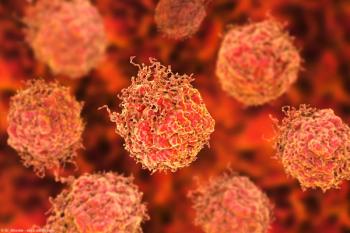
Zero-ischemia nephrectomy appears safe, efficacious
A technique of zero-ischemia robotic partial nephrectomy (RPN) using near-infrared fluorescence imaging appears to be associated with better postoperative kidney function compared with conventional RPN with main-artery renal clamping.
Istanbul, Turkey-A technique of zero-ischemia robotic partial nephrectomy (RPN) using near-infrared fluorescence (NIRF) imaging appears to be associated with better postoperative kidney function compared with conventional RPN with main-artery renal clamping.
In a study of patients who underwent successful zero-ischemia RPN, postoperative renal function was better than that in a matched cohort who had undergone traditional RPN with clamping of the main artery, according to senior author Michael D. Stifelman, MD, associate professor of urology at New York University and director of the Robotic Surgery Center at the NYU Langone Medical Center, New York.
Main renal artery clamping during RPN provides a bloodless field for the surgeon to work but at the potential expense of compromising postoperative renal function via prolonged ischemia and perfusion injury, said Dr. Stifelman, who presented the findings at the 2012 World Congress of Endourology and SWL in Istanbul, Turkey.
Zero ischemia is the concept of super-selective clamping so that the vessels feeding the “tumor plus margin” are exposed and clamped while blood flow to the rest of the kidney is uninterrupted.
A method to achieve zero ischemia involves NIRF imaging using indocyanine green to confirm areas of ischemia during selective clamping. This technique has been described previously as an adjunctive means of identifying renal vasculature and parenchymal perfusion during RPN.
In Dr. Stifelman’s study, zero-ischemia RPN using NIRF was attempted in 34 patients using the da Vinci NIRF system (Intuitive Surgical, Inc., Sunnyvale, CA) by one of three highly experienced surgeons in RPN. Secondary and tertiary tumor branched vessels were identified and controlled with robotic bulldog(s) or neurosurgical aneurysm microbulldog(s). Indocyanine green dye was given, and super-selective ische-
mia was confirmed with NIRF. Local ischemia was defined as darkened tumor/peri-tumor area with green fluorescence of remaining kidney.
Seven of the 34 patients considered for zero-ischemia RPN required conversion to main renal artery clamping. Of the seven patients, five had persistent tumor fluorescence after clamping, indicating inadequate tumoral devascularization, and two had parenchymal bleeding during partial nephrectomy. These 27 patients were matched to 27 patients undergoing conventional RPN by the same surgeon.
Similar operative outcomes seen
The matched-pair analysis showed similar operative outcomes between the two groups, except for a longer operative time in the zero-ischemia group (256 vs. 212 minutes; p=.02). Complications associated with surgery occurred in seven patients in the group undergoing main-artery clamping and in six in the zero-ischemia group.
Postoperative kidney function was superior in the zero-ischemia group, as evidenced by a smaller early (at 2 to 4 weeks) reduction in estimated glomerular filtration rate (eGFR). The percentage loss of eGFR was –1.8% in the zero-ischemia group compared with –14.9% in the main artery clamping group (p=.03). All surgical margins were negative.
“The use of indocyanine green fluorescence imaging to aid in tumor-specific vascular control is safe and feasible, and allows a reliable method for the surgeon to confirm the area of ischemia during selective clamping,” Dr. Stifelman concluded.
Prospective trials with larger sample sizes are in progress to determine the efficacy of this technique, he added.
Newsletter
Stay current with the latest urology news and practice-changing insights — sign up now for the essential updates every urologist needs.


















